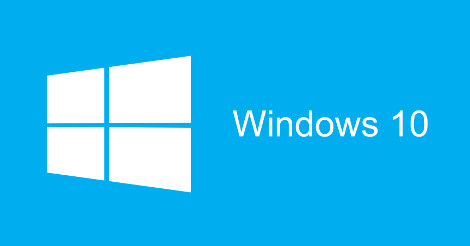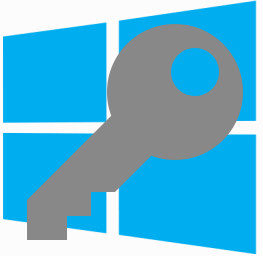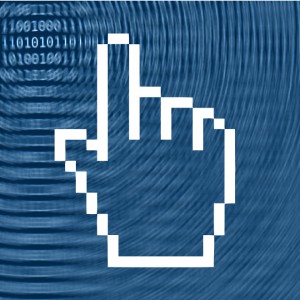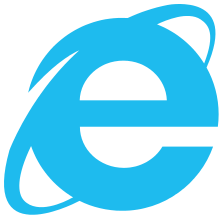 Are you considering upgrading your computer to Windows 10? Have you already? With the launch of Windows 10 you may be asking the question “Should I upgrade to Windows 10”. The answer depends on you. I tend to live by the words of wisdom, “if it ain’t broke, don’t break it”. Windows 10 undoubtedly fixes a ton of issues that people were complaining about with Windows 8 and Windows 8.1 interface, but is that really reason enough to jump right in to 10? Most Windows 8 and Windows 8.1 are probably totally willing to go all the way with Windows 10, but Windows 7 users will probably be a little more reluctant.
Are you considering upgrading your computer to Windows 10? Have you already? With the launch of Windows 10 you may be asking the question “Should I upgrade to Windows 10”. The answer depends on you. I tend to live by the words of wisdom, “if it ain’t broke, don’t break it”. Windows 10 undoubtedly fixes a ton of issues that people were complaining about with Windows 8 and Windows 8.1 interface, but is that really reason enough to jump right in to 10? Most Windows 8 and Windows 8.1 are probably totally willing to go all the way with Windows 10, but Windows 7 users will probably be a little more reluctant.
So far the only issues customers are coming into our computer repair store in St. Louis MO are with peripheral devices such as printers and scanners and higher end gaming graphics cards. The drivers are just not ready for Windows 10 on all devices yet, so you may want to consider waiting for a few months until the rest of the tech world works out the kinks. The good thing is you have time to wait to upgrade your PC. People using Windows 7, Windows 8, and Windows 8.1 can upgrade for FREE to Windows 10 anytime before July 29, 2016. Yes, for FREE! With all Microsoft Windows releases the corporate IT world will sit on the fence for a while while they work the bugs and unforeseen issues of the operating system. However, if you are one of those people who has to be on the cutting edge of Microsoft Windows technology then you may choose to upgrade to Windows 10 right away.
What is Windows 10?
Microsoft is offering a FREE upgrade to their new Windows 10 operating system. This is not a trial, this is the full version! To take advantage of the offer you must upgrade to Windows 10 by July 29, 2016. The upgrade is valid for qualified Windows 7 and Windows 8 and 8.1 devices. You will need to have internet access to upgrade at home, and if you don’t then bring your computer to a local computer repair store, and they can probably perform the upgrade for you at a minimal charge.
What if you don’t like Windows 10?
Having commitment issues, that’s okay. You can easily roll back to your previous version of Windows at anytime during the upgrade period. But the upgrade period won’t last forever, so don’t get trapped in an old version of Windows and then have to pay to upgrade at a later date.
I have Windows Vista, can I upgrade to Window 10?
Yes you can upgrade to Windows 10, but you have to pay Microsoft for the software, sorry! Be sure to check your computer’s specifications to make sure that your computer can handle running Windows 10.
I have Windows XP, can I upgrade to Windows 10?
What? You are still running Windows XP. You need to upgrade your computer immediately and Windows 10 is your perfect opportunity, that is if it will work on your old computer. Check your computer specifications against the following section to see if Windows 10 will run on your computer.
What kind of computer do I need to run Windows 10?
It doesn’t take much of a computer to run Windows 10. The following are the minimum requirements to run Windows 10. Please note these are the minimum, and not the recommended, so you can always throw a lot more at it.
Processor:
1 gigahertz (GHz) or faster processor or SoC
RAM:
1 gigabyte (GB) for 32-bit or 2 GB for 64-bit
Hard disk space:
16 GB for 32-bit OS 20 GB for 64-bit OS
Graphics card:
DirectX 9 or later with WDDM 1.0 driver
Display:
800×600
So what is SO different about Windows 10?
Don’t look for the ‘Charms bar’ menu in Windows 10. The charms menu is that strange hidden menu that pops up on the left side of your screen on Windows 8 and 8.1. Instead the Charms bar has been replaced with a more robust Settings section that can be easily found from the Start Menu.
Windows 10 returns to the classic Windows 7 style desktop, complete with a Start Menu! However the new Start Menu features optional live tiles for those who liked that addition to Windows 8 and Windows 8.1.
Another cool feature of Windows 10 is the new universal apps. This mean that you purchase and App once on your computer and then have it available on all your Windows devices – ie. PC, Surface, tablet, phone, or even your Xbox One!
Another new feature called Continuum senses what kind of device you are using and adjusts the interface accordingly. So if you have a Surface Pro 3 and remove the keyboard Windows 10 will then switch to an entirely touch based system, and vice versa, it is that easy!
Apple users love Siri and Android users love Google Now, the talking companions that will help them with their day to day web searches via voice commands. Windows 10 introduces a new voice integrated feature called Cortana for all devices include desktops and laptops not just Windows tablets and phones.
And finally the best feature in my humble opinion is the new task view mode to easily create multiple workspaces on your PC and switch between them as if they were on different screens. This feature is great for multi-tasking! This is a feature Linux and Mac OS X users have had for a long time, but for some strange reason, Windows just never caught onto.
Are you ready to upgrade to Windows 10 now? Go ahead and try it out, and if you run into issues bring your computer to a local computer repair store for help and questions you may have about Windows 10.
Please notice:
Microsoft Windows Vista, Microsoft Windows 8, Microsoft Windows 8.1 Microsoft Windows 10, Microsoft Continuum are all trademarks of Microsoft Corporation
Apple, Mac OSX, Siri are all trademarks of Apple Corporation
Google, Android, Google Now are all trademarks of Google Inc.
 If you are getting a message popping up on Windows that says “You may be a victim of software counterfeiting. This copy of Windows is not genuine and is not eligible to receive the full range of upgrades and product support from Microsoft” there is no need to be alarmed because you probably just need to activate your copy of Windows using your Windows license key. This error message can occur on Windows XP, Windows Vista, Windows 7, Windows 8, and Windows 10 versions.
If you are getting a message popping up on Windows that says “You may be a victim of software counterfeiting. This copy of Windows is not genuine and is not eligible to receive the full range of upgrades and product support from Microsoft” there is no need to be alarmed because you probably just need to activate your copy of Windows using your Windows license key. This error message can occur on Windows XP, Windows Vista, Windows 7, Windows 8, and Windows 10 versions.
 Are you considering upgrading your computer to Windows 10? Have you already? With the launch of Windows 10 you may be asking the question “Should I upgrade to Windows 10”. The answer depends on you. I tend to live by the words of wisdom, “if it ain’t broke, don’t break it”. Windows 10 undoubtedly fixes a ton of issues that people were complaining about with Windows 8 and Windows 8.1 interface, but is that really reason enough to jump right in to 10? Most Windows 8 and Windows 8.1 are probably totally willing to go all the way with Windows 10, but Windows 7 users will probably be a little more reluctant.
Are you considering upgrading your computer to Windows 10? Have you already? With the launch of Windows 10 you may be asking the question “Should I upgrade to Windows 10”. The answer depends on you. I tend to live by the words of wisdom, “if it ain’t broke, don’t break it”. Windows 10 undoubtedly fixes a ton of issues that people were complaining about with Windows 8 and Windows 8.1 interface, but is that really reason enough to jump right in to 10? Most Windows 8 and Windows 8.1 are probably totally willing to go all the way with Windows 10, but Windows 7 users will probably be a little more reluctant.  Cybercriminals claiming to be from Microsoft or an anti-virus company may call an unsuspecting victim on the phone. The victim’s information is usually obtained through publicly available phone directories so they scammer may also know other information such as the victim’s name and address when they call.
Cybercriminals claiming to be from Microsoft or an anti-virus company may call an unsuspecting victim on the phone. The victim’s information is usually obtained through publicly available phone directories so they scammer may also know other information such as the victim’s name and address when they call.  It seems almost common these days to read about corporations engaging in blackhat hacking operations to steal data from their rival competitors, but never before have we heard of the same blackhat hacking tactics being used by professional sports league teams.
It seems almost common these days to read about corporations engaging in blackhat hacking operations to steal data from their rival competitors, but never before have we heard of the same blackhat hacking tactics being used by professional sports league teams. Earlier this year cyber security software company Kapersky announced the discovery of a cyber intrusion that affected many of it’s internal computer systems which initiated a large scale investigation. They believe the virus penetrated their systems through an email attachment sent to an employee at the company. From there the virus moved stealthily through the company’s computer network targeting it’s customer’s computer networks and collecting information. Instead of removing the virus Kapersky monitored the virus on their systems in an attempt to better understand its function and purpose.
Earlier this year cyber security software company Kapersky announced the discovery of a cyber intrusion that affected many of it’s internal computer systems which initiated a large scale investigation. They believe the virus penetrated their systems through an email attachment sent to an employee at the company. From there the virus moved stealthily through the company’s computer network targeting it’s customer’s computer networks and collecting information. Instead of removing the virus Kapersky monitored the virus on their systems in an attempt to better understand its function and purpose. Social media “click bait” targeting has become a big business in recent years. “Click-baiting” is when a publisher posts a link on a social media website like Facebook, Twitter, or Pinterest with a headline that lures people to click to see more, without telling them much information about what the user will really be taken to. Websites like BoredPanda, Buzzfeed, Reddit, College Humor, and Gawker (to name a few) use click bait headlines to lure users to embedded web content surrounded by advertisements. Click baiting has forced Facebook developers to re-evaluate their algorithm for what is considered relevant content, as currently the more clicks a link receives the more likely it is to appear in other users feeds. Wording a link with just the right message in order to get users to click out of the social media website is what “click baiting” is all about. While many of these links take users to relevant content (like this article), there are several new scams also using the tactic to infect computers with malware or attempt to steal personal information.
Social media “click bait” targeting has become a big business in recent years. “Click-baiting” is when a publisher posts a link on a social media website like Facebook, Twitter, or Pinterest with a headline that lures people to click to see more, without telling them much information about what the user will really be taken to. Websites like BoredPanda, Buzzfeed, Reddit, College Humor, and Gawker (to name a few) use click bait headlines to lure users to embedded web content surrounded by advertisements. Click baiting has forced Facebook developers to re-evaluate their algorithm for what is considered relevant content, as currently the more clicks a link receives the more likely it is to appear in other users feeds. Wording a link with just the right message in order to get users to click out of the social media website is what “click baiting” is all about. While many of these links take users to relevant content (like this article), there are several new scams also using the tactic to infect computers with malware or attempt to steal personal information. A new destructive virus known as Rombertik avoids detection from most anti-virus software by making a computer unusable by deleting key files on a computer and filling the hard drive with extraneous bytes of data in order to overwhelm the anti-virus software from detecting it.
A new destructive virus known as Rombertik avoids detection from most anti-virus software by making a computer unusable by deleting key files on a computer and filling the hard drive with extraneous bytes of data in order to overwhelm the anti-virus software from detecting it.  Since 2012 a very sophisticated new form of ransom-ware has been infecting millions of Windows computers. CryptoWall, Cryptorbit, and CryptoLocker or Crypto-malware is a Trojan horse that encrypts files on the compromised computer. The malware uses RSA 2048 bit encryption to scramble important data files using public/private key cryptographic technology making the data files unusable. The victim is instructed to pay a hefty ransom fee ranging from $150 to $750 USD using an anonymous bitcoin payment method to purchase the decryption key that will allegedly decrypt the users files. Even if the user pays the ransom, there’s no guarantee that the attacker will provide the decryption key needed to unlock their files.
Since 2012 a very sophisticated new form of ransom-ware has been infecting millions of Windows computers. CryptoWall, Cryptorbit, and CryptoLocker or Crypto-malware is a Trojan horse that encrypts files on the compromised computer. The malware uses RSA 2048 bit encryption to scramble important data files using public/private key cryptographic technology making the data files unusable. The victim is instructed to pay a hefty ransom fee ranging from $150 to $750 USD using an anonymous bitcoin payment method to purchase the decryption key that will allegedly decrypt the users files. Even if the user pays the ransom, there’s no guarantee that the attacker will provide the decryption key needed to unlock their files.  On March 17 2015 the software company Microsoft announced that it would be phasing out support for its Internet browser software “Internet Explorer” also known as “IE”. Internet Explorer is the Internet browser packaged with the Microsoft Windows operating system since 1995 and was the most frequently used Internet browser for several years in the early 2000s. The web browser will be replaced in Windows 10 with a new web browser known as “Spartan” however will still be included in some enterprise editions of Windows 10.
On March 17 2015 the software company Microsoft announced that it would be phasing out support for its Internet browser software “Internet Explorer” also known as “IE”. Internet Explorer is the Internet browser packaged with the Microsoft Windows operating system since 1995 and was the most frequently used Internet browser for several years in the early 2000s. The web browser will be replaced in Windows 10 with a new web browser known as “Spartan” however will still be included in some enterprise editions of Windows 10.  Lenovo recently released a product security advisory about a man-in-the-middle attack vulnerability that exists on some of the Lenovo Notebook laptop models sold by the company between Jan 2014 until Feb 2015.
Lenovo recently released a product security advisory about a man-in-the-middle attack vulnerability that exists on some of the Lenovo Notebook laptop models sold by the company between Jan 2014 until Feb 2015.